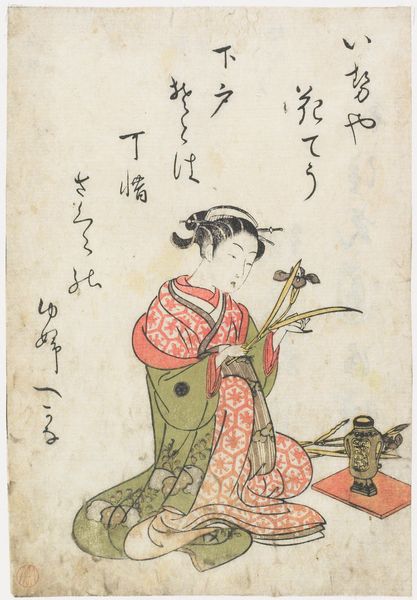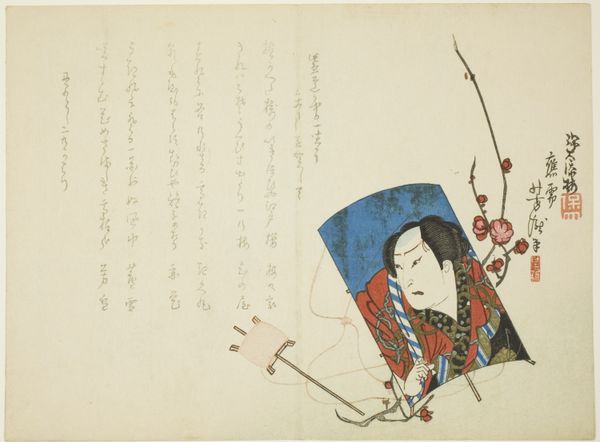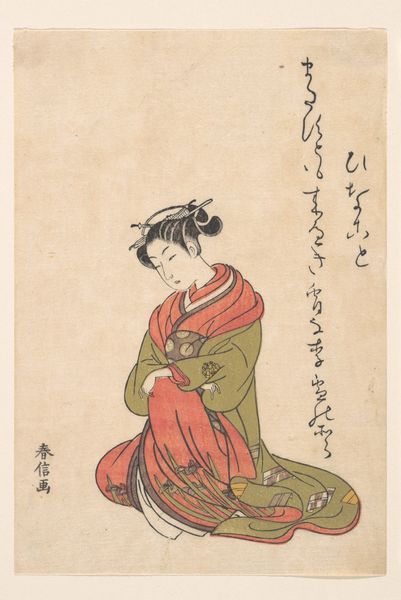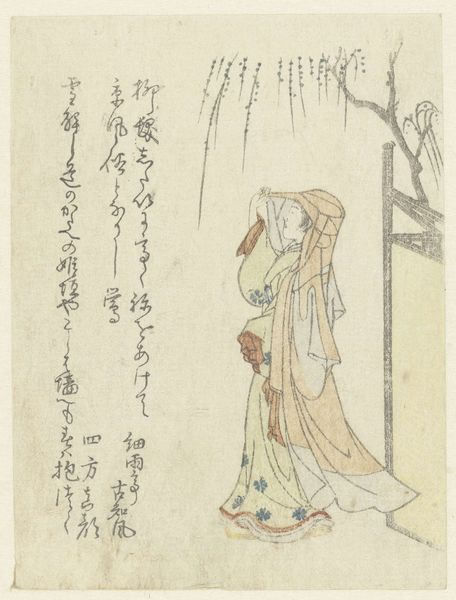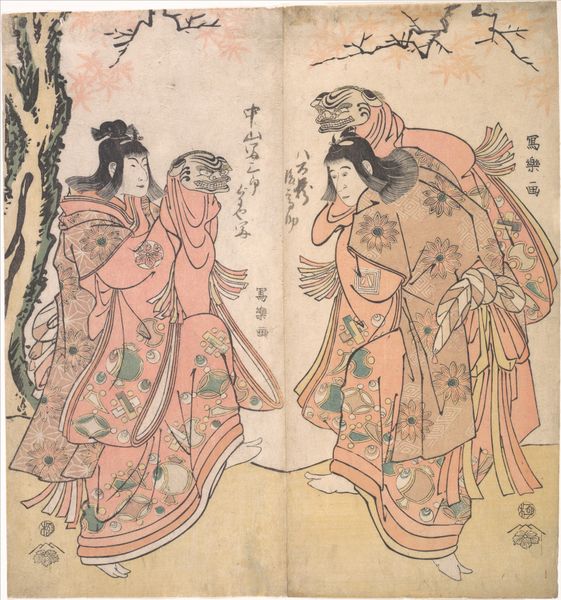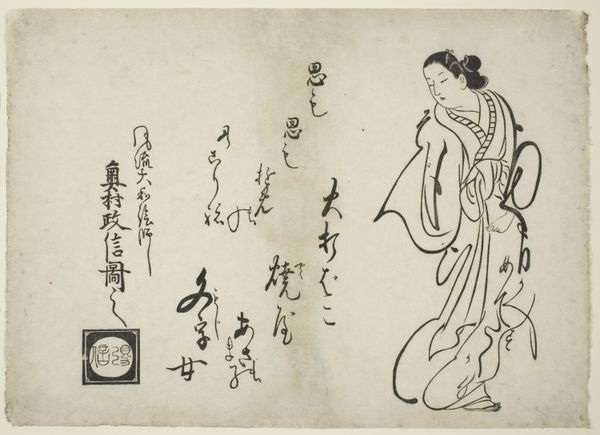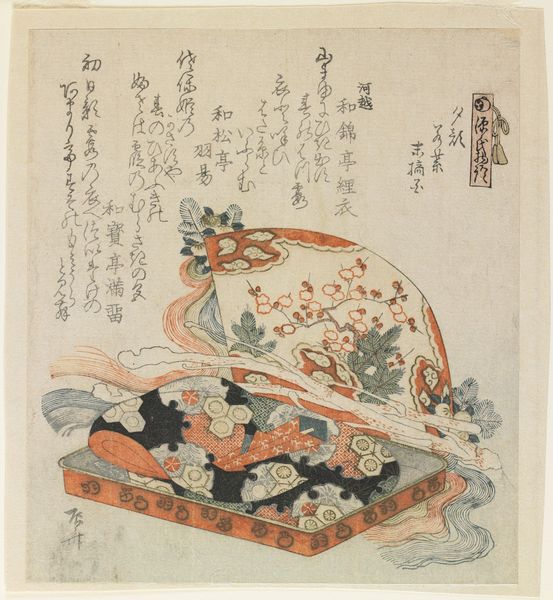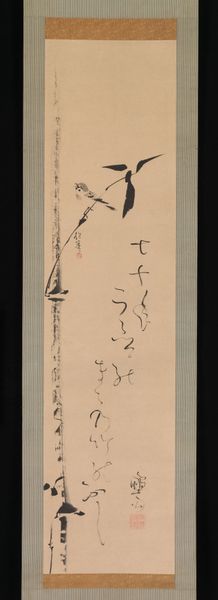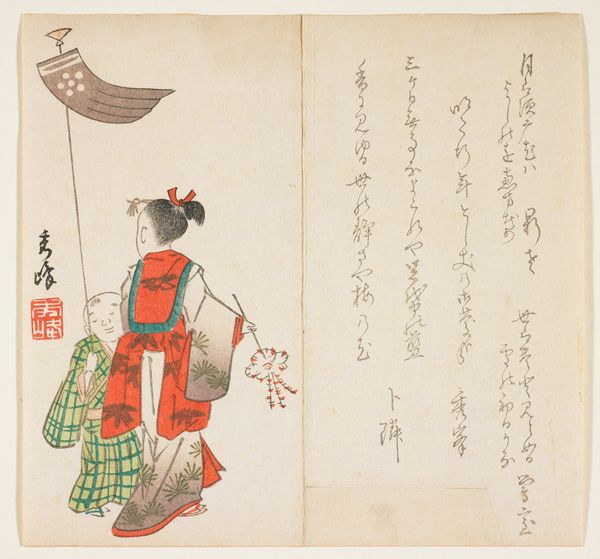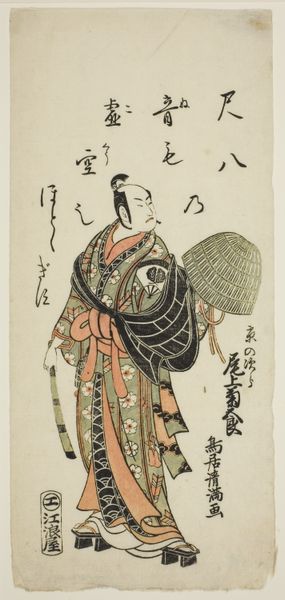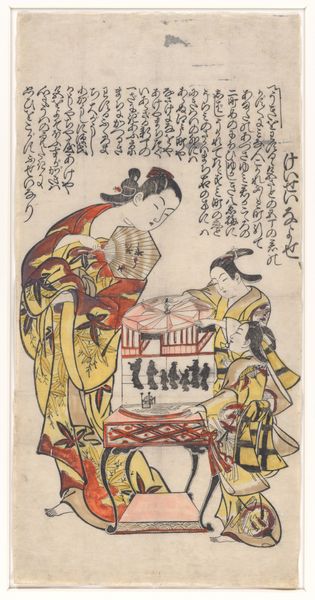
A Collection of Witty Poems on Michinoku Paper (Michinoku-gami kyōka awase 陸奥紙狂歌合; alternative title: Kyoka Michinoku no kami 狂歌みちのくの紙) 1793
0:00
0:00
print, textile, woodblock-print
#
portrait
# print
#
asian-art
#
textile
#
ukiyo-e
#
woodblock-print
Dimensions: 13 13/16 x 9 1/16 in. (35.1 x 23 cm)
Copyright: Public Domain
Editor: This is "A Collection of Witty Poems on Michinoku Paper," a woodblock print by Utagawa Toyohiro from 1793. It shows a woman in traditional robes, and some elegant Japanese script. It feels very still, almost melancholy. How do you interpret this work? Curator: It's a fascinating piece, isn't it? I see a potent commentary on women’s roles and expectations within Edo-period Japanese society. The woman is presented passively, her back turned. The elegant robes signal status, yet simultaneously confine her. Consider how Utagawa uses the conventions of ukiyo-e to both represent and perhaps subvert social norms. Who do you think her audience was? And what do you suppose they thought of her positioning and the overt display of poetry? Editor: I hadn't considered the subversive element, I guess I was thinking that ukiyo-e just reflects everyday life, not challenges it. I suppose the poetry could provide another layer. Maybe it offers her a voice she otherwise lacks in this visual representation? Curator: Precisely! The "witty poems" invite us to imagine her inner life, contrasting with the restrictive visual framing. Think about the rise of female literacy and artistic expression during this period and how this print participates in the discourse surrounding it. Does it celebrate, critique, or both? Editor: It’s complex! The contrast you highlight really makes you wonder what Toyohiro was trying to say. Maybe the tension *is* the point? Curator: Absolutely! This piece highlights how art serves not just as a mirror to society, but also as a site of negotiation and contestation of identities and power dynamics. Editor: I see that now. I'm going to spend a lot more time looking at these prints and the social issues that surrounded their making. Curator: Exactly. Considering those forces gives the artworks a lot more complexity, even ones that might appear simple at first.
Comments
No comments
Be the first to comment and join the conversation on the ultimate creative platform.
